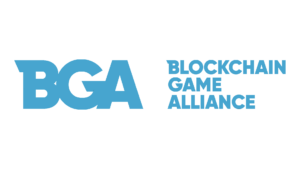Blockchain Games: The Ultimate Guide
Find out why blockchain gaming is dominating the conversation.

For decades, video game publishers have pushed the limits of technology to create games that were bigger, longer, prettier, and more complex. Yet in 2022, the next big thing in gaming isn’t photorealistic graphics or next-generation hardware — it’s blockchain games. Square Enix, Ubisoft, and EA are just a few of the triple-A publishers that have expressed interest in blockchain gaming, and some developers are already incorporating cryptocurrency and NFT rewards into their games.
That said, there’s still plenty of confusion surrounding blockchain gaming. This guide covers everything you need to know, from the technology driving this trend to examples of blockchain games you can play right now.
What Are Blockchain Games?
To put it in the simplest terms, blockchain games are video games that utilize blockchain technology. These games incorporate cryptocurrency, non-fungible tokens, or both, setting them apart from other games in a few key ways. When used as a native digital currency in games, cryptocurrency gives players the opportunity to earn while they play. Meanwhile, NFTs give gamers control over the ownership and tradability of their digital assets, providing rewards beyond just high scores and bragging rights.
Benefits of Blockchain Games
If you find yourself wondering why blockchain gaming is creating such a stir, look no further than the benefits it offers players:
- Digital asset ownership: Traditionally, any digital prizes earned in games were limited to that game’s ecosystem, and they actually belonged to the publisher, not the player. Blockchain games encourage community ownership, meaning players can keep their digital assets without worrying about a developer pulling the plug.
- Interchangeable ecosystems: Rather than having assets locked to the game in which they were earned, blockchain games let players break out of that walled garden and transfer digital goodies from one game to another.
- Economic incentives: The unique “play to earn” model used in blockchain gaming allows players to earn income — anywhere from hundreds of dollars to hundreds of thousands.
To learn more, read the full article: What is a Blockchain Game?
Cryptocurrency Games
Cryptocurrency and the blockchain go hand in hand, so it makes sense that many blockchain developers incorporate these digital tokens into their in-game economies. The decentralized nature of the blockchain means that rewards earned in-game — which, in this case, can mean actual cryptocurrency tokens — aren’t subject to the same risks that other digital rewards are. Some cryptocurrency games operate on the “play-to-earn” model, while others seek to educate gamers about crypto, the blockchain, and the decentralized app (dapp) ecosystem.
This is important because blockchain games make up more than half of all user activity in the dapp space. So-called “crypto-educational games” provide players with interactive lessons about the world of cryptocurrency, which can often be overwhelming for first-time users. Developers of these educational cryptocurrency games aim to help players gain blockchain development skills and even launch their own dapps.
For more about cryptocurrency games, read How Cryptocurrency Games Raise the Stakes for Players.
NFT Games
The other major category of blockchain games is those that use non-fungible tokens. NFTs have already taken the digital art world by storm, and have become so prominent social media outlets are experimenting with NFT profile pictures. In NFT games, players can earn one-of-a-kind digital assets and retain ownership of them outside of the game’s ecosystem, which sets them apart from more traditional in-game items.
It’s important to note that NFTs and cryptocurrency are intrinsically linked to the blockchain, so these types of games aren’t mutually exclusive. Some blockchain games require a cryptocurrency buy-in before players can start unlocking NFTs or use their own crypto as the in-game currency. The biggest difference is that NFT games award players with unique, indivisible, and decentralized digital assets that have the potential to rise in value based on scarcity.
Take a deeper dive into the world of NFT gaming in How NFT Games Tokenize the Digital World.
How Does “Play to Earn” Work in Blockchain Games?
Creating real-life revenue streams using video games isn’t a new idea. Pro gamers and streamers have made successful careers out of their gaming skills, and players have been buying and selling rare in-game items for cash for years. In fact, one Second Life player actually bought the (virtual) city of Amsterdam for $50,000!
Blockchain games expand upon this concept with the “play to earn” model, which allows players to collect items with real-world fiat value — like cryptocurrency or NFTs — as they play. Unlike other digital assets that players buy, sell, and trade, blockchain rewards retain value outside of the game environment and transfer ownership to the player.
For example, one might spend a few hundred dollars for a rare weapon in an MMO like World of Warcraft, but if the game were to shut down tomorrow, that asset would be lost and the player would have no way to recoup their investment. The decentralized nature of blockchain gaming prevents this from happening because the transaction is recorded in a ledger that shows proof of ownership. Your crypto or NFT rewards won’t disappear just because the game in which you earned them does.
In addition to creating value for players, the play-to-earn model can be beneficial to developers as well. For example, Vietnamese game studio Sky Mavis requires an upfront cryptocurrency investment to play blockchain game Axie Infinity; in turn, those players can earn increasingly powerful NFTs and convert in-game tokens back into fiat. The success of this model helped earn Sky Mavis a $3B valuation, with sales of NFTs earning millions every day.
For an in-depth look at play-to-earn game economies, check out What is “Play to Earn” in Blockchain Games?
Getting Started With GameFi
An amalgamation of “gaming” and “decentralized finance” (DeFi), GameFi is another term used to describe the play-to-earn environment in blockchain games. While specific requirements for getting started vary by game, here are some steps players can take as they embark upon their blockchain gaming adventure:
- Step 1: Set up a crypto wallet. Most blockchain games require that players have an active cryptocurrency wallet ready to house their tokens. Be sure to check compatibility before getting started, as some titles require these wallets to run on a specific cryptocurrency protocol.
- Step 2: Fund the wallet. Once you’ve done your research and set up a wallet capable of storing cryptocurrency and NFTs, it’s time to transfer fiat into crypto. Again, these requirements differ game to game; CryptoBlades, for example, requires players to fill their Ethereum-compatible MetaMask wallets with in-game cryptocurrency that can only be purchased using Binance Coin.
- Step 3: Buy your first items. While some GameFi games can be started for free, others require an initial purchase to begin interacting with them in a meaningful way. That means cashing in some tokens from your crypto wallet in the hopes of eventually earning back that money (and more) through the play-to-earn ecosystem.
For more information about the fusion of gaming and crypto-powered finance, be sure to read What is GameFi in the World of Crypto?
What are some examples of blockchain games?
Right now, there are hundreds of blockchain games available, and that number is only expected to increase as more developers and gamers come to embrace this technology. Here are just a few:
- Axie Infinity: Perhaps the most well-known blockchain game, Axie Infinity requires an NFT buy-in for players to get started. The adorable Pokémon-esque title has players collecting and battling NFT Axies while supporting the in-game ecosystem with a unique token called AXS. In turn, the play-to-earn economy means players can earn money as they play, provided they have a balanced team of Axies.
- Splinterlands: This free-to-play mobile hit utilizes the popular collectible card game (CCG) genre, but the twist is that players can use their cards on other marketplaces, not just in Splinterlands. OpenSea, Rarible, and even the Axie Marketplace accept Splinterlands cards, creating the decentralized ownership that NFT enthusiasts are drawn to.
- League of Kingdoms: In this MMO, players actually own the land upon which digital battles occur. These land NFTs are backed by Ethereum and recently incorporated Binance support as well. There are also cosmetic NFTs players can buy to decorate their kingdoms.
- Age of Rust: This story-driven action/adventure game is one of the most robust blockchain games on the market, mimicking a AAA gameplay experience with puzzles, mech battles, a dark sci-fi world, and impressive graphics. It just so happens that players can earn some serious money while playing thanks to a $2 million cryptocurrency treasure hunt hosted by developer Space Pirate Games and the Enjin blockchain platform.
This is just a taste of the experiences players can find in blockchain gaming right now. From mobile to MMO and spanning a variety of genres, blockchain games are making an impact on the gaming industry, and AAA publishers are taking notice.
For a lengthier list of blockchain games, check out The Big List of Blockchain Games.
Betting on Blockchain
Blockchain gaming may be in its infancy, but it’s already dominating the conversation. NFTs are a perfect fit for video game economies, which already rely on digital assets and collectibles. By making those assets non-fungible and indivisible, these assets become more than a collection of pixels, and gamers are embracing the digital ownership possibilities of the blockchain. Publishers who are slow to embrace blockchain gaming may find themselves left behind.
Entering this space can be challenging, but at dSphere, we’re making it more accessible. Our NFT SaaS platform was designed to help publishers break into this new era of gaming and entertainment, providing all the tools needed to develop blockchain games. Launch multi-chain NFT marketplaces, use NFT airdrop campaign management, leverage the power of Blockchain Oracles and Smart Contracts and take advantage of our suite of gamification and economy optimization tools. Ready to infuse your games with the power of the blockchain? Get in touch!










Leave A Comment